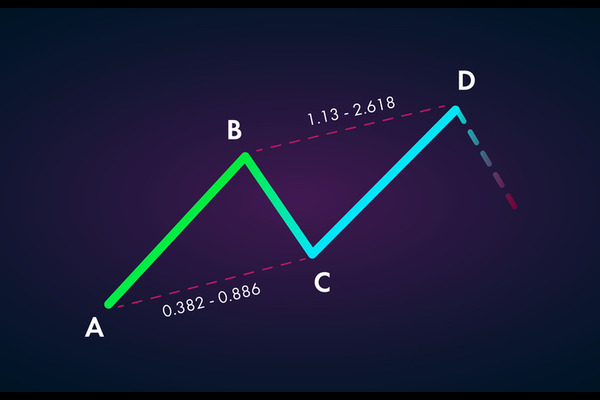When it comes to technical indicators, many investors are familiar with them.
Among them, there is a widely used indicator, the Relative Strength Index (RSI),
which should be well-known to everyone. But if we ask, Who invented this
indicator? Not many people are likely to be able to answer.
RSI is an investment theory founded by J.W. Wilder, who also invented other
analytical tools such as PAR, parabola, dynamic index MOM, swing index, market
price volatility, etc. But it is strange that Wilder later published an article
overturning the benefits of these analytical tools and introducing another new
theory to replace them, namely "Adam's Theory".
Today, we will talk about the story behind legendary Wall Street trading
master Wylder and his famous "Adam Theory".

Wilder himself
Wells Wilder is one of the world's most famous technologists and analysts. As
long as you play stock, foreign exchange, or futures, you have used the
indicators created by this person: Relative Strength Index (RSI): Relative
strength index; Average True Range (ATR): average real area; Directional
Movement Index (DMI): trend indicator; Stop * * * Reveres (SAR) indicator, also
known as Parabolic SAR or stop loss turning operation point indicator; Momentum
(MOM): momentum indicator; Average Directional Index (ADX); etc. He invented the
commonly used indicators of these famous technical schools.
His main works include "Adam's Theory", "Delta Theory", and "New Concepts of
Technology Trading Systems".
Barron's Weekly rated him as the "Titan of the technical analysis
community".
The Journal of Stocks and Commodities referred to him as a "hero in the field
of technical analysis".
Forbes Magazine individually referred to him as "the most outstanding trader
who has published works." Please note that the title here is' trader '. When he
retired, he had nearly ten million dollars in cash in his account and owned a
large area of real estate in his hometown, which he earned through
transactions.
Wilder's advice
1. There are three types of traders (investors) in the market.
The first category includes commercial giants with strong capital.
The second category is large speculators, many of whom have business entities
and are technical traders.
The third category is small traders. The number of small traders is
approximately 1000 times the total number of the other two types of traders. Unfortunately, only 5% of small traders can make money, while the rest
contribute to market liquidity.
2. It is not easy to make good transactions. The key is to have a good trading
system and execute transactions according to it.
3. The main reason for transaction failure is irrational or emotional, leaving
plans or systems behind.
4. Emotional behavior must be avoided in transactions. This requires
experience, training, quick identification of problems, and determination to
solve them.
5. Some traders are very talented, but most people must work very hard to
learn.
6. Trading should follow the trend, but there should be no significant
fluctuations. The failure of the transaction is due to its deviation from
mainstream or short-term trends and high volatility.
7. Before trading, technical analysis should be used to manage risks. If the
risk is high, do not trade or take measures to deal with the risk.
The Ten Principles of Adam's Theory
1. When holding losses, never increase positions or "spread costs."
This is easy to understand. If you hold a position to make money, it means
you are right; If you lose money, it means you are wrong. What if it's wrong?
Either hold the position until the trend is reversed and turn losses into wins;
Either hold the position until the stop-loss is triggered or automatically close
the position. Don't let the market prove you wrong, but still add positions or
do so-called covering positions to lower costs, let alone move stop loss
positions (or stop loss ratios) or even delete stop loss orders, as that will
only make you suffer even more losses.
2. When opening or adding positions, it is necessary to set up a stop-loss
order.
So that when you make mistakes, it can help you proactively close your
positions and prevent losses from expanding. Before conducting a transaction,
determine the stop-loss position or stop-loss ratio based on your risk
tolerance. Once an order is placed and a stop loss is set, it cannot be easily
changed; otherwise, the stop loss will lose its effectiveness.
3. Unless the stop loss position is moved after profit to protect profit, the
stop loss position must not be moved or cancelled.
When you place an order that goes against the market, your account loses
money. At this point, moving the stop loss position to avoid closing the stop
loss position will only cause losses to expand. When holding losses, not
admitting mistakes to the market but constantly expanding stop-loss positions
may ultimately make things irreparable.
4. Small losses must not be turned into irreparable large losses.
Leave the green mountains here; don't be afraid of burning without firewood.
Once the situation is not right, immediately close the position and leave the
market to wait and see. There are many opportunities on the market. However,
your principal is limited, and once you suffer a major loss or a bone injury, it
is difficult to gather enough funds to trade in the short term.
5. The loss amount for a single transaction or a single trading day cannot
exceed 10% of the total trading funds.
6. Don't copy the bottom and touch the top; let the market come out on its
own.
Many investors are accustomed to bottoming out and paying a high price.
7. Don't stand in front of the train.
Don't trade against the trend. There are reasons to rise and reasons to fall.
Don't feel like you have fallen too much or that you have risen too high and
fallen short. We need to wait for the market to provide direction and for
technical indicators and graphics to provide signals.
8. Maintain elasticity.
Always be cautious when making transactions. Especially after continuous
profitability, once confidence expands, it is easy to make mistakes.
9. When the operation is not smooth, it is important to understand how to
rest.
If you lose money continuously, it's better to stop trading, calm down, and
sum up the gains and losses. Then we start again, and the winning rate will be
even higher.
10. Ask yourself if you really want to make some money from the market, and
listen carefully to your answers.
The Application of Adam's Theory
Investors can grasp Adam's theory from two aspects: first, the symmetry of
trend operation; and second, operating according to the situation. The following
will focus on how to apply these two techniques in detail.
1. Symmetry
Simply put, it is to measure the trend changes in the later period based on
the previous stock price trend operation. A strong symmetrical trend operation
can allow investors to have a good grasp of the target price and trajectory of
the stock.
What situation can cause strong symmetry?
a. The speed of the trend is the fastest; b. The speed in the past is close
to the current level.
Specific practical application: When a trend ends, you can refer to the
previous trend to measure the trajectory of the next band.
There are three phenomena that suggest strong symmetry:
Phenomenon 1: The price rises to a clear point in the graph and then breaks
through.
Phenomenon 2 is a change in trend. The stock price has broken through a clear
long-term downward trend line, and a new upward trend has set a new high
recently.
Phenomenon three: the gap or large difference between high and low prices on
the same day. The price movement was originally quite sluggish but suddenly
jumped upwards, or the difference between high and low prices on the day
significantly increased, indicating a significant change in the price trend.
Especially when the first and second situations occur together.
2. Take advantage of the situation.
Another core of Adam's theory is to follow the trend. The simpler, the more
basic. When a trend forms, investors enter the market to operate. The faster the
trend runs, the more likely it is to continue.
The core of an operating system is not predicting the future but confirming
the direction of current trends. So, investors should wait until they can
confirm the direction of the trend before entering the market for trading.
For example, we use the gold hourly chart since January 2019 to identify and
confirm the direction of trend movement. Rising from a low point, fluctuating,
and selling when rising to the top is a phased selling point position. If there
are signs of a decline when rising to a high point, it is necessary to sell in a
timely manner to gain profits. The analysis and operation of buying and selling
points should be carried out in a circular manner, based on the essence of
Adam's theory of homeostatic operation for research and analysis.
Note: So the market will tell you the time to enter the market for operation:
one is to break through the previous high; second, the trend has reversed;
third, when there is a gap or the price difference between high and low on the
day increases, pay attention to observing the operating points within it.
To master the secrets of using Adam's theory, one needs to understand its two
basic operational connotations:
Firstly, before entering a certain market, it is necessary to recognize
whether the trend of that market is rising or falling.
Second, when buying is down and selling is up, you should be alert to whether
you are wrong about the general trend. After you are wrong, you need to admit
your mistake and not fight against the Market trend.
Adam's theory quote: "If it keEPS falling, I will sell it until it reaches
zero. If it keeps rising, I will buy it until it reaches the moon."







